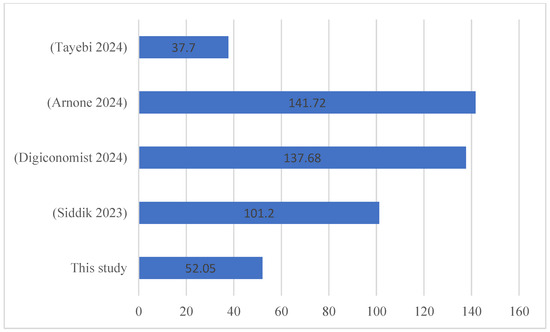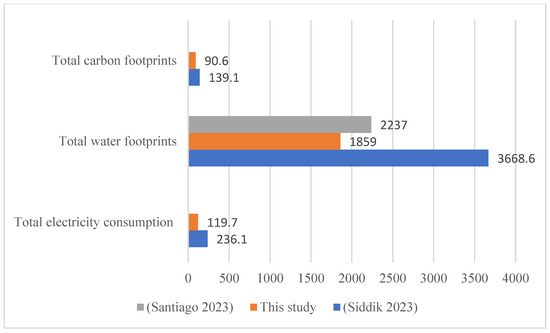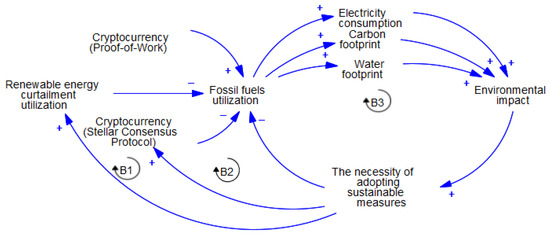America’s Cup overhauled: Women sailors, battery power, fleet racing and more in new Protocol. Plus hope for Brits?
Helen Fretter
Helen Fretter August 12, 2025
0
shares
Finally an agreement has been reached by the Defender and Challenger of Record for the next America's Cup... and it's revolutionary in many ways
TAGS:
The much delayed Protocol for the 38th America’s Cup has – finally – been agreed and signed, and there are some radical changes within it for both the racing and the structure of the America’s Cup. Plus, potentially some promising hints for the British team.
This Protocol is long overdue, and the past few months have seen publicly played out disagreements between ETNZ, headed by Grant Dalton, the Challenger of Record, represented by Ben Ainslie, and the other potential teams (Alinghi, New York Yacht Club, the French, and Italians), that have been vehement and, at times, a bit ugly to watch.
Even until late last week I was still receiving messages from those closely involved suggesting that the 38th America’s Cup could yet become a ‘Deed of Gift’ match – or in other words, that the Protocol could fail, and the Cup go back to a two team match. There have clearly been some emergency summits held among the key players with Ainslie, Dalton, and Bertie Bickett of the Royal Yacht Squadron hinting that it had been a fairly torrid 72 hours.
So today’s news is something of a relief, and positive step, though it’s worth noting that until the final ‘Partnership’ agreement (more on that below) is signed in September, this could yet all become null and void. Such is the way of the America’s Cup…
Cup cyclors replaced with batteries
Some of the most visible changes will be in the crew used to sail the AC75 for the 38th America’s Cup. Teams must sail either their existing AC75 from the 37th Cup, or build one to an existing design.
The boats will race with a crew of five, one of which will be a female sailor. However, the four cyclors are to be replaced with a new battery power system.
There are no ‘surrogate’ boats allowed this time around, such as the LEQ12 designs some teams built in the last cycle, and were heavily used in the design and testing of elements such as power cycles. The addition of batteries also removes the number of athletes on board, and adds a ‘push button’ element, similar to the AC40s in the last Women’s America’s Cup and Youth America’s Cup.
“This isn’t a decision taken lightly regarding the cyclors and the athleticism of sailing these boats and the effort that those guys put in,” Sir Ben Ainslie – the head of Athena Racing, the official Challenger of Record – told Yachting World this morning. “But we had to make some difficult decisions regarding cost caps and moving forward. That’s a tough call.”
“It doesn’t actually change the sailing of the boat,” Grant Dalton added. “I think the key to it is not to just create unlimited power because, really, you might as well carry around a power station. It’s to mimic – and I think this won’t be very hard – the peaks and troughs of the power of an average [AC]75 from the last America’s Cup and produce that.”
Peter Burling – who left Team New Zealand and joined Luna Rossa Prada Pirelli – will be eligible to compete for the Italian team
Nationality and Non-compete agreement
The nationality rule was known to be a huge sticking point in the negotiations for the new Protocol. For AC38 the female sailor and at least two other crew members must be of the same nationality as the yacht club they represent.
The other big shift in this updated Protocol is the removal of a ‘non-compete’ clause which would have banned sailors who competed in one team from competing in another, which was a point known to be a big bone of contention among some teams.
Widely referred to as the ‘Burling clause’ after New Zealand three-times winning helmsman Peter Burling did not re-sign with Emirates Team New Zealand but instead moved to Italian team Luna Rossa Prada Pirelli, a lot of focus has been on whether Burling could sail for the Italians. In this morning’s media call, Grant Dalton confirmed that he now could.
After an announcement earlier this year Naples is now confirmed as the 38th America’s Cup venue.
38th America’s Cup venue
The 38th America’s Cup is still due to be held in Napes, Italy, in 2027. The racing cycle for the 38th Cup will include up to three Preliminary regattas – potentially two as soon as next year in AC40s, before a Preliminary Regatta in AC75s in Naples.
There will also be more racing scheduled, including fleet racing for the AC75s as part of the Challenger Series.
A cost cap of £75million is to be imposed – though Dalton acknowledged that would be tricky to fairly implement for teams such as Luna Rossa Prada Pirelli, who are already up and running, with staff employed.
Entry opens soon, with just a 28 day window, and a €7million entry fee. Ainslie said that they are expecting most of the AC37 teams to enter. “I think we’re looking at five, maybe six teams for this next cycle.
Grant Dalton added: “Whether there is any further – if there is, they’re going to come out of Italy. I think that would be fair to say. So there could be an extra one, not sure yet.”
‘Fundamentally reshaped’ America’s Cup
However, the biggest structural change to the America’s Cup baked into this Protocol is the formation of a new Partnership Agreement, in which all currently involved teams have agreed a new commercial structure for the America’s Cup.
The idea is to give the event – which has historically been largely subject to the whims of its current holder – a firmer timetable. Going forward the Cup should have a two-year cycle giving teams more security when it comes to sourcing sponsors, planning campaigns etc. A new board will make key decisions such as class rule, agreeing venues etc, following an Formula One type model.
There’s no getting away from the fact this is controversial. The America’s Cup is the oldest sporting trophy in the world, and the Deed of Gift is one of its most unique elements. But it has also struggled to maintain momentum between cycles, and often ended up with protracted legal battles to get events off the ground. At one stage, it looked as if the 38th Cup could go the same way.
In this morning’s announcement, Team New Zealand CEO Grant Dalton said: “As the three-time successive winner and Defender of the America’s Cup and along with the RNZYS as current Trustee, we feel the responsibility to continue to drive the growth of the America’s Cup event.
“Although the America’s Cup is the oldest trophy in international sport and the pinnacle of sailing, its Achilles’ heel has always been its lack of continuity, so this transformation now gives all teams collective stewardship, and we are introducing a new executive management team to be headed up by a new independent CEO.
“By negotiating this Protocol and the America’s Cup Partnership with the Challenger of Record, it provides certainty for teams, commercial partners, and event venues to invest for multiple editions. This is the boldest change in 174 years of the Cup, while respecting the Deed of Gift, along with the Challenger of Record we are confident this is the best initiative to grow what is already one of the greatest sporting events in the world.”
New York Yacht Club Commodore Jay Cross said: “As the founding Trustee of the America’s Cup, we are completely supportive of the move to modernise the oldest sporting trophy in the world.”
“This is a seismic moment for the America’s Cup,” said Ainslie. “The partnership agreement fundamentally reshapes the governance and organisation of the event. The teams and yacht clubs share a vision to make the America’s Cup more inclusive, compelling, and financially sustainable. This new model marks a unified commitment to that vision. I am excited for the future of the sport.”
So will this partnership agreement actually go through? There does seem to be – on the surface at least – more agreement on the fundmental principles of this, than on some of the details that were driving the AC38 disputes.
Grant Dalton explained that there is more to it than appears in the Protocol. “You’re not seeing really the key document that actually has been signed – and you’re not going to be able to see it either, which is the term sheet,” he told invited media this morning.
“Which sets out the transitional period and the transitional rules of the defender handing over basically the keys to the city, the Crown jewels, handing over all that. That is the key document. The rest of [the agreement], I have every confidence [will be signed], because it’s well done.”
Both of the AC75s used on the 2024 America’s Cup are likely to return, although the British boat will be renamed. Photo: America’s Cup
Hope for British America’s Cup team?
For British Cup fans, the signing of the Protocol by the Royal Yacht Squadron as Challenger of Record, represented by Ben Ainslie’s Athena Racing, is obviously a very good sign. Since the loss of sponsorship by Sir Jim Ratcliffe and INEOS, there have been major concerns about the viability of the British America’s Cup Challenge.
While Ainslie did not speak about the funding of his own team, he did drop a few hints that could be interpreted encouragingly. The first being that, while he confirmed that the AC75 hull they used in the 37th America’s Cup to win the Louis Vuitton Cup will race again, it would be under a different name, suggesting a title sponsorship deal may be in place.
“The boat that’s Athena Racing’s boat is not going to be called Britannia,” he said in today’s media call.
While talking about the importance of having female athletes in the America’s Cup, he added: “We have funding in place for our youth and women’s team right now, for the whole programme. I think it just goes to show how much support there is out there across the sailing community to push this agenda.”
There’s lots more to unpick from this morning’s announcement, and we’ll follow up with further details as we have them.
Download a full copy of the new America’s Cup Protocol.
If you enjoyed this….
Yachting World is the world’s leading magazine for bluewater cruisers and offshore sailors. Every month we have inspirational adventures and practical features to help you realise your sailing dreams.
Build your knowledge with a subscription delivered to your door. See our latest offers and save at least 30% off the cover price.









